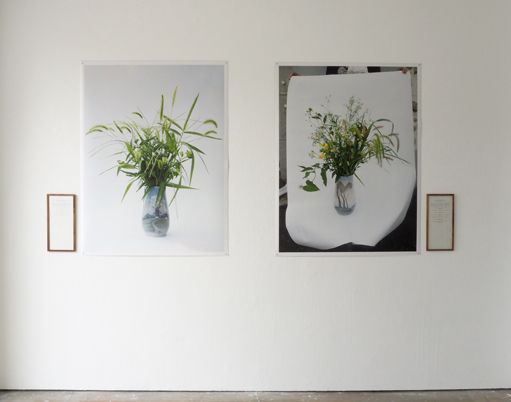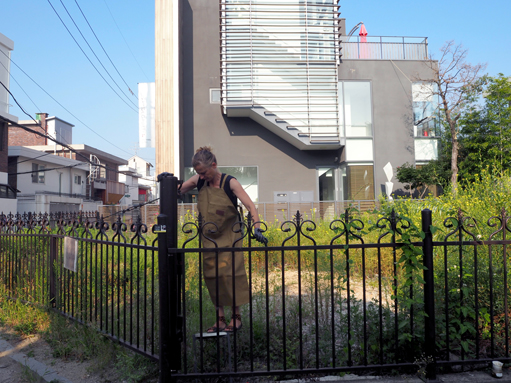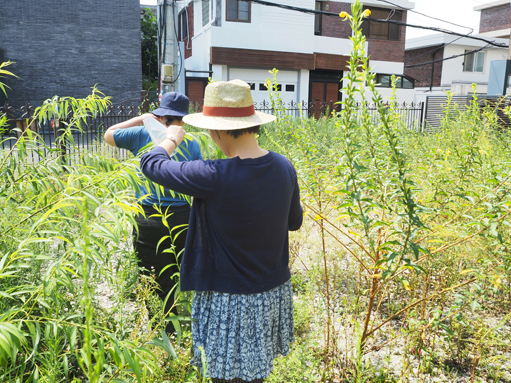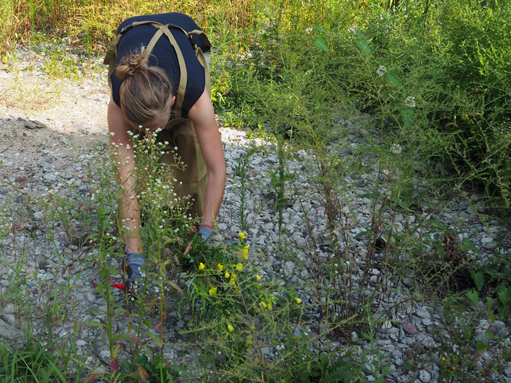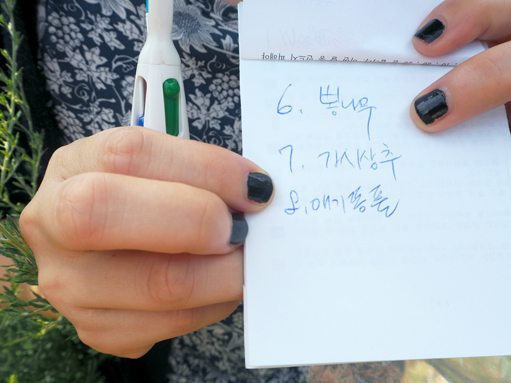still alive _ 2016
Plant collection no. 8-13
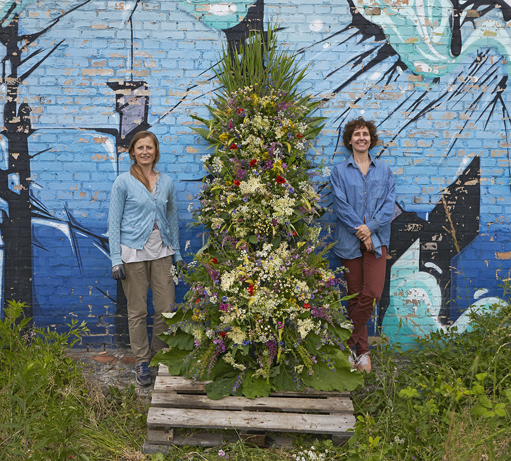
In the exhibition is a photography of an Korean flower arrangement, a hwa-hwan. On each side of it is a person, respectively the artist herself and her helper. A "hwa-hwan" is according to Korean tradition used for celebration. At occasions like weddings, birthdays or other celebrated special events the flower bouquet consists of many colours. At funerals the same arrangement is made out of white flowers only. In the exhibited photography the hwa-hwan is made in colours, but differ from the traditional Korean version as it is not made out of the ordinary bouquets flowers as roses, lilies etc, but out of wild flowers, weeds and grasses. The arrangement is made and documented outside in the open air. It is leaning against a wall with graffiti and is rather informally displayed on a Euro-pallet with grass around it growing high. The place is a wasteland site and considering the context one senses that it is not an ordinary celebration of a person or an event. Rather the artist makes a celebration of a place and something of a more general significance. The hwa-hwan is made of flowers picked from the very same wasteland site as where it is photographed. It is a site that used to be in the periphery of Copenhagen, but through urban development it is now getting still closer to be in a central location of the city. The last building was thorn down in 2002. It was an old factory, but towards the end it hosted a collective of artist studios, which the artist herself was part of. The plan was to build apartment blocks immediately after 2002, but it didn't happen as the site proved to be severely polluted. The hwa-hwan arrangement is a mapping of how the plant species re-establish themselves, and is at the same time a witness of nature's empowerment and taking over the place. The bouquet becomes a celebration of nature's ability to regenerate. But the arrangement seems also to suggest questions: what do we see when we see a polluted site? Is it possible to see beyond the pollution; - or generally how do we change the view with which we see, so that we can see something else? How does it look like from the point of view of the self-organising nature? By imposing the still life iconic imagery on the wild life plants, Berner also ask questions about what we know and the place of the "wild" in our culture?
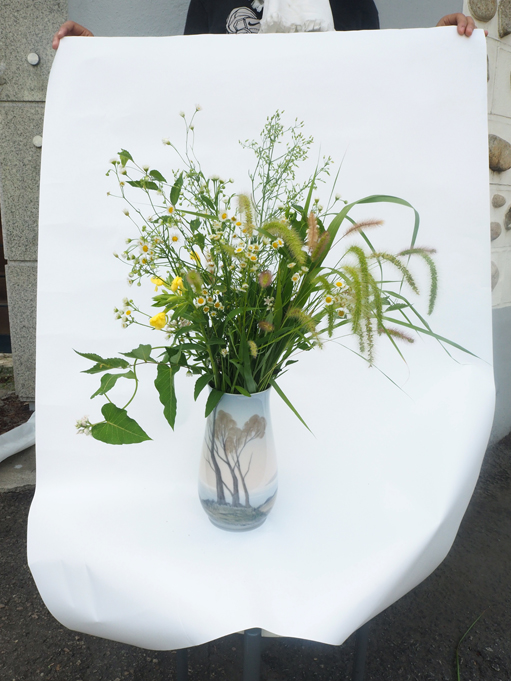
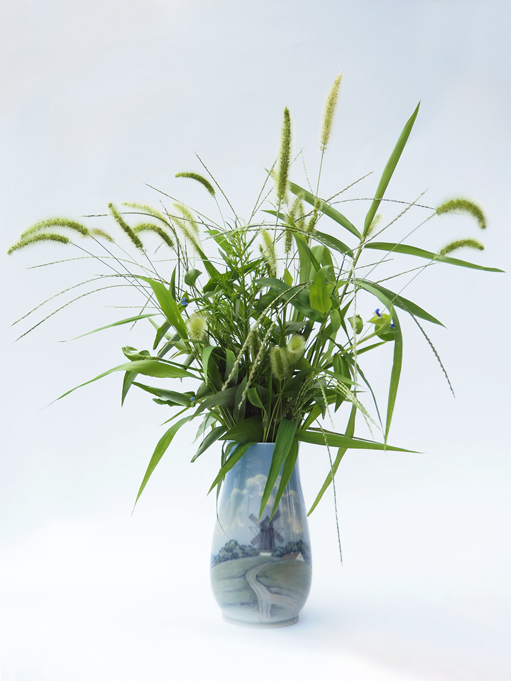
In Berner's artistic research in Seoul she has investigated similar wasteland sites throughout the city. This has given her the insights needed to produce the site-specific work presented in the gallery. The approach is similar to the Copenhagen project; to find out what will the South Korean wild nature, weeds and other overseen vegetation reveal in the urban setting of Seoul. Her finds are arranged in old Danish porcelain vases - made by the famous Danish porcelain maker: Royal Copenhagen. A type of vases favoured by the Danish bourgeoisie up through the 20th century. Several of the vases depict a Danish landscape with a romanticized ideal character to it The bouquets arrangements will in this context work as mappings and a registration of specific sites and hence let the eye of a cultural point of view blend with the concrete collecting of plants.
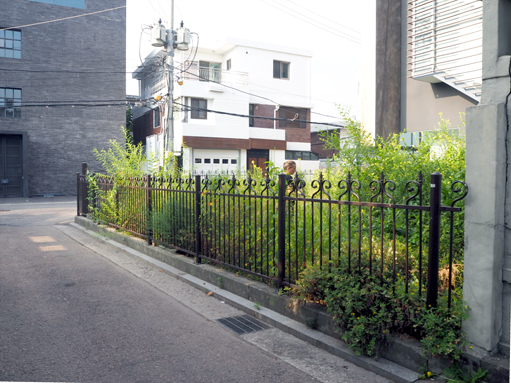
In the exhibition all arrangements are on display as photo documentations supplied with a list of species. On the floor is a shipping box displaying the Royal Copenhagen vases used in Seoul.
